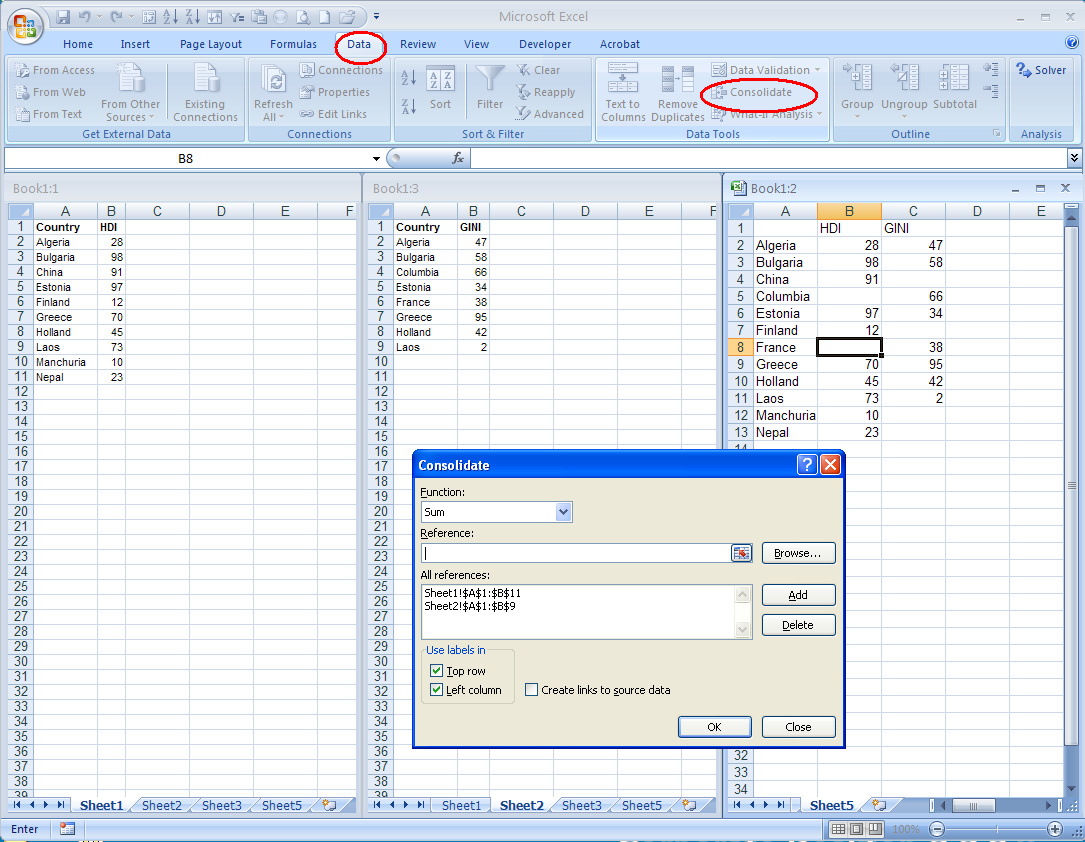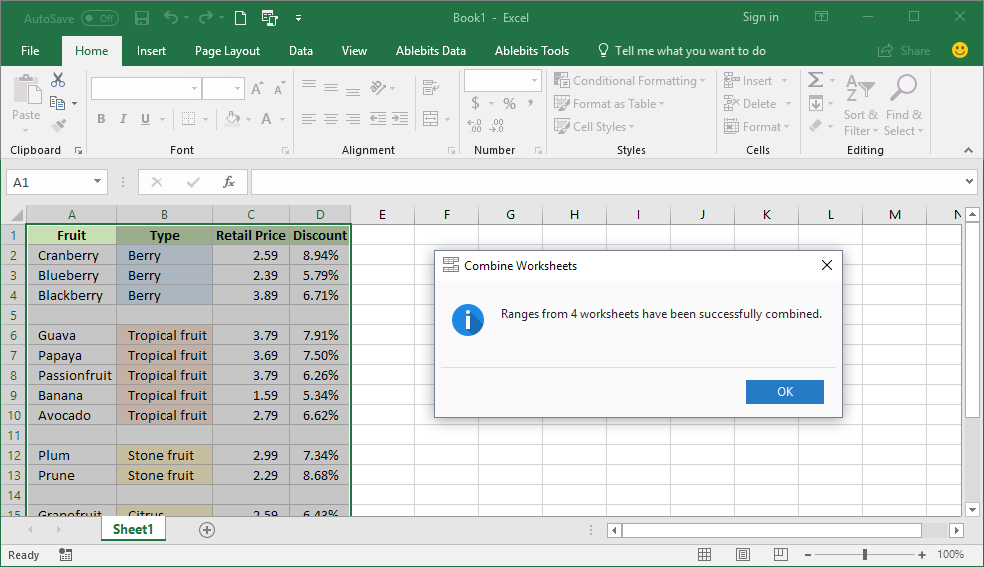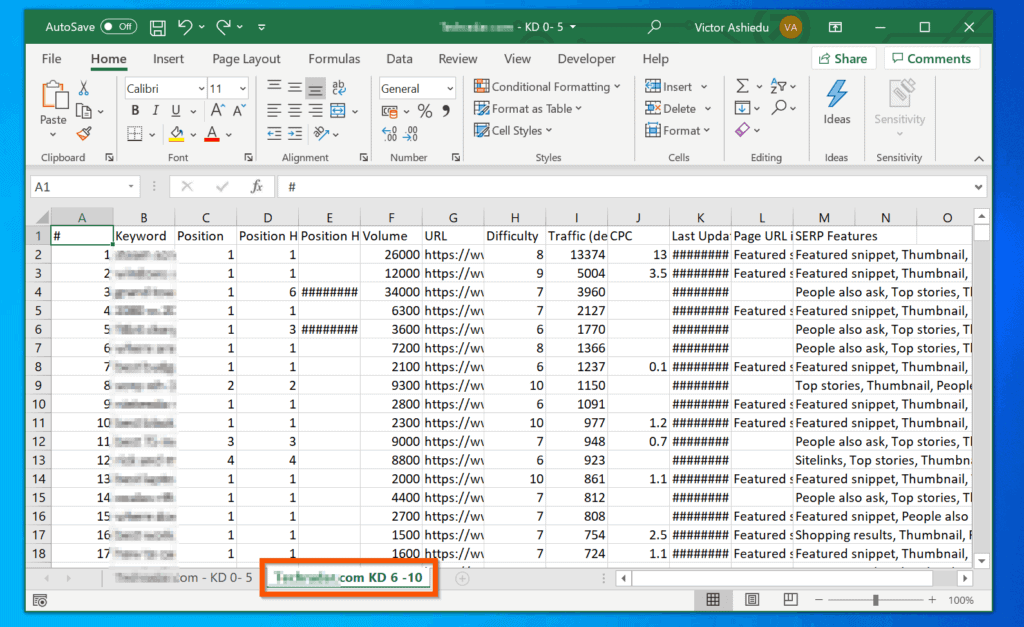How to Merge Excel Sheets Quickly and Easily

Understanding Excel Sheet Merging

Excel spreadsheets are essential tools in data management across various sectors. However, combining data from multiple sheets or workbooks can often become a tedious task. Let's delve into why merging Excel sheets is so crucial:
- Data Consistency: Consolidates information to ensure that datasets from different sources are aligned.
- Time Efficiency: Streamlines data analysis by avoiding repetitive copy-pasting.
- Data Integrity: Reduces errors by automating the merging process, minimizing manual entry risks.
- Scalability: Easier to manage when dealing with expanding data or new information sources.
Learning how to merge Excel sheets effectively not only saves time but also enhances the reliability of your analysis and reporting.
Manual vs. Automated Excel Merging

When considering merging data in Excel, there are primarily two methods to choose from:
Manual Merging

- Copy and Paste: Direct copying from one workbook to another.
- Cons: Time-consuming, error-prone, and impractical for large datasets.
Automated Merging

- Using Macros or VBA: Automates the merging process through scripts, making it faster and less error-prone.
- Built-in Excel Functions: Tools like Power Query or advanced filter options can simplify merging tasks.
- External Tools: Software that can handle merging from external sources.
Step-by-Step Guide to Manual Merging

If you prefer the control of manual merging or are dealing with small datasets, here's how you can do it:
- Open All Workbooks: Have the source and destination workbooks open.
- Select Data: Choose the cells or range you want to copy from the source sheet.
- Copy: Use Ctrl+C or right-click and select "Copy."
- Navigate to Destination: Switch to the workbook where you want to paste the data.
- Paste Options:
- Paste Values: To paste just the data.
- Paste Formatting: To retain the formatting.
- Paste Formulas: If needed, to preserve the formulas.
- Repeat: If merging multiple sheets, repeat the process for each additional sheet.
💡 Note: Ensure data consistency by checking for discrepancies in column headers or data structure before merging.
How to Use Excel's Built-in Features for Merging

Excel provides several tools to make merging sheets less of a manual labor:
Consolidate Feature

To merge data using the Consolidate feature:
- Select Destination: Choose where you want the merged data to appear.
- Navigate to Data Tab: Click on the Data tab.
- Consolidate: Select "Consolidate" from the "Data Tools" group.
- Choose Function: Decide on how to consolidate the data (e.g., sum, average).
- Add Sources: Click "Add" and select the ranges from each sheet you want to include.
- Adjust Options: Ensure proper linking and specify whether to use top or left row/column labels.
Power Query

To merge data using Power Query:
- Open Power Query: Go to Data > Get Data > From Other Sources > Blank Query.
- Import Sheets: Navigate to each sheet you wish to import, adding them one by one.
- Merge Queries: Use the Merge Queries feature, selecting how you want to join the data (e.g., by column).
- Load Data: Once merged, load the query result into Excel.
Advanced Techniques for Excel Sheet Merging

Using VBA

For large-scale merging, VBA scripts can automate the process:
Sub MergeSheets() Dim ws As Worksheet Dim lastRow As Long, lastCol As Long, wsLastRow As Long, wsLastCol As Long Dim wsSource As Worksheet, wsDestination As Worksheet Dim rngSource As Range, rngDestination As RangeSet wsDestination = ThisWorkbook.Sheets("Destination") 'Set your destination sheet here For Each wsSource In ThisWorkbook.Worksheets If wsSource.Name <> wsDestination.Name Then lastRow = wsDestination.Cells(wsDestination.Rows.Count, "A").End(xlUp).Row lastCol = wsDestination.Cells(1, wsDestination.Columns.Count).End(xlToLeft).Column wsLastRow = wsSource.Cells(wsSource.Rows.Count, "A").End(xlUp).Row wsLastCol = wsSource.Cells(1, wsSource.Columns.Count).End(xlToLeft).Column Set rngSource = wsSource.Range(wsSource.Cells(1, 1), wsSource.Cells(wsLastRow, wsLastCol)) Set rngDestination = wsDestination.Cells(lastRow + 1, 1) rngSource.Copy rngDestination End If Next wsSource
End Sub
⚠️ Note: Be cautious with VBA; incorrect scripts can alter or delete your data.
Using External Software

There are third-party tools designed specifically for Excel merging, offering:
- Automated Options: GUI-based tools for seamless merging.
- Advanced Features: Conflict resolution, data cleansing, and transformation capabilities.
Each method has its merits, tailored to different scenarios:
| Method | Best Used For | Pros | Cons |
|---|---|---|---|
| Manual Merging | Small datasets or unique merging requirements | Complete control; no learning curve | Time-consuming; prone to errors |
| Built-in Excel Features | Standard merging tasks with uniform data | User-friendly; integrates directly with Excel | Limited advanced options |
| VBA Script | Repetitive, large-scale merging | Automated; can handle complex merging | Requires programming knowledge; risk of data mishandling |
| External Software | Complex merging scenarios | Advanced features; user-friendly interfaces | Cost; reliance on third-party software |

In wrapping up this detailed exploration, merging Excel sheets efficiently is paramount in today’s data-driven environments. Whether you’re dealing with manual merging for small datasets, or prefer the automation provided by Excel’s built-in functions, VBA scripts, or external software, the right approach depends on the task’s complexity and the data’s nature. Key takeaways include the benefits of:
- Automating Merging: Save time and reduce errors.
- Consistent Data: Maintain data integrity across sheets.
- Scalability: Scale your data management to keep pace with business growth.
- Flexibility: Choose methods that suit your merging needs, from simple to complex scenarios.
Can Excel Sheets from Different Workbooks be Merged?

+
Yes, Excel allows merging sheets from different workbooks using methods like the Consolidate feature or Power Query.
What are the Best Practices for Merging Excel Sheets?

+
Here are some best practices:
- Ensure consistent column headers.
- Back up data before merging.
- Use automation tools for large datasets to minimize errors.
How can I Merge Sheets without Overwriting Existing Data?

+
Using the Consolidate feature or Power Query allows you to merge data into a new sheet, preserving the original data.
What Should I do if the Data Formats Differ Across Sheets?

+
Standardize formats before merging or use Power Query to clean and transform data during the merge process.
Is There a Maximum Size or Number of Sheets I can Merge?
+Excel has limitations based on system memory, but typically, you can merge many sheets as long as they fit within your system’s capacity. For very large datasets, consider using Power Query or external tools.